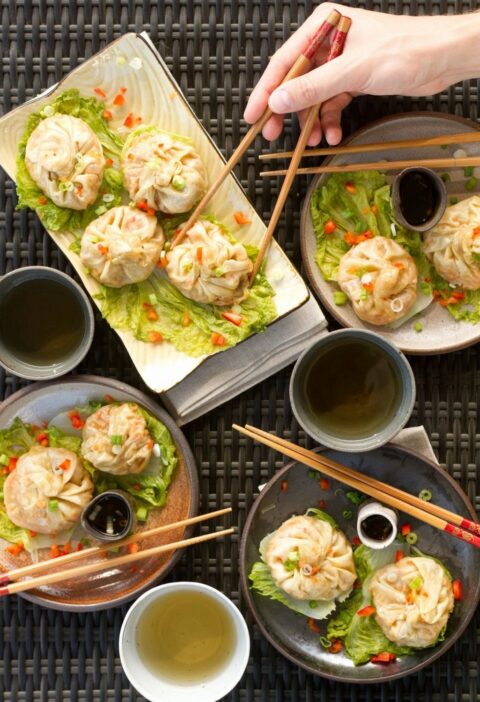When you think of Indian cooking the first word that often comes to mind is – yes you are right, SPICY! The fragrance that makes up Indian cuisine is derived from the blend of correct spices that are used for each dish. It enhances the taste and flavour and often spices are even used as preservatives. Certain spices are toasted or dry roasted in a pan and ground before use. This process releases the aroma & enhances the flavour of these spices even more. A common kitchen equipment found in most Indian households is the mortar & pestle and these days the coffee grinder or spice grinder!
A spice is different from a herb, although generally the term herbs & spices are used together. Spice usually contains the seeds, roots or pods of plants or flowers; whereas herb constitutes the leaf or green stems of the plants. Spices are harvested from parts of plants grown often in tropical regions whereas herbs are the plants as it is or the greens and roots of plants. Often herbs are dried and used for e.g. rosemary, thyme, parsley but they still are herbs and not spice!
Apart from its culinary uses, spices are used for its medicinal purposes, making perfumes, aromatherapy and as beauty products. It can even be used as a weapon (pepper spray)!
All right lets now get down to the basics. There is this great misconception, especially in western nations that the only spice used in Indian cooking is curry powder – only there is no such thing or spice as curry powder! Actually Indian curries are made using a blend of different spices, the most common of them being turmeric, cumin, coriander and chilli. These 4 form the basic Indian curry spices or “masalas” (the term used for spices in India).
Then of course there are spices like cinnamon, clove, cardamom (black & green), fenugreek seeds, fennel seeds, mace, star anise, bay leaf, which in varying proportions make up your garam masala –“garam” in Hindi means hot so like the name suggests these are the spices which gives heat or boosts up the spice quotient! Apart from the garam masala, there is the chaat masala, the chai/tea masala (why go to coffee shops when you can make your own chai latte), the paanch phoran (the Bengalis use this), the pav bhaji masala and the list goes on.
There are also some other spices like asafoetida. garlic, ginger, mustard seeds, basil, poppy seeds, pomegranate seeds, saffron, sesame seeds, carom seeds, carom seeds, nigella seeds, black salt, mango powder, ginger, peppercorns, tamarind etc. which are used according to the regional culinary preferences. Asafoetida is generally used for tempering dals & lentil dishes. It is often used as a digestive aid & is said to decrease flatulence often associated with eating lentils. Tamarind is used more in the south of the country & is also used as a meat tenderizer. Likewise each spice has its own flavor and use and in combination with the food or ingredient used for cooking adds up to the uniqueness of the dish!
It is always a good idea to store spices in airtight containers and in a cool dry place.
And now here are the commonly used spices from the Indian subcontinent and their Hindi (since this is the national language) names.
Asafoetida – Hing
Basil – Tulsi
Bay leaf – Taj patta
Black salt – Kala Namak
Black Cumin/Caraway – Shahjeera
Cardamom (black) – Badi Elaichi
Cardamom (green) – Elaichi
Carom seeds – Ajwain
Chilli – Lal Mirch
Cinnamon – Dalchini
Citric Acid – Nimboo Phool
Clove – Laung
Coriander seeds – Dhania
Cumin – Jeera
Fennel Seeds – Saunf
Fenugreek seeds -Methi dana
Garlic – Lehsun
Ginger – Adarak
Mace – Javitri
Mango Powder -Amchur
Mustard seeds – sarson/rai
Nigella/Onion seeds – Kalonji
Nutmeg – Jaiphal
Oregeno/Carom seeds – Ajwain
Peppercorns – Kali Mirch
Pomegranate seeds – Anardana
Poppy seeds – Khus khus
Rock Candy – Mishri
Saffron – Kesar
Salt – Namak
Sesame seeds = Til
Star anise – Chakra Phool/Badiyan
Sugar – Shakar/Chini
Tamarind – Imli
Turmeric – Haldi
Vinegar – Sirka



